I have been in this business for a long time now. And for many years, I was the young guide taking out all of the “old” guys. As I’d tie on their fly or untangle a wad of tippet enveloping that fly, time after time they’d say, “Wait ‘til you turn 40.” I’d laugh it off, secretly thinking it would never happen to me. Well it did happen to me and it doesn’t seem so funny now!
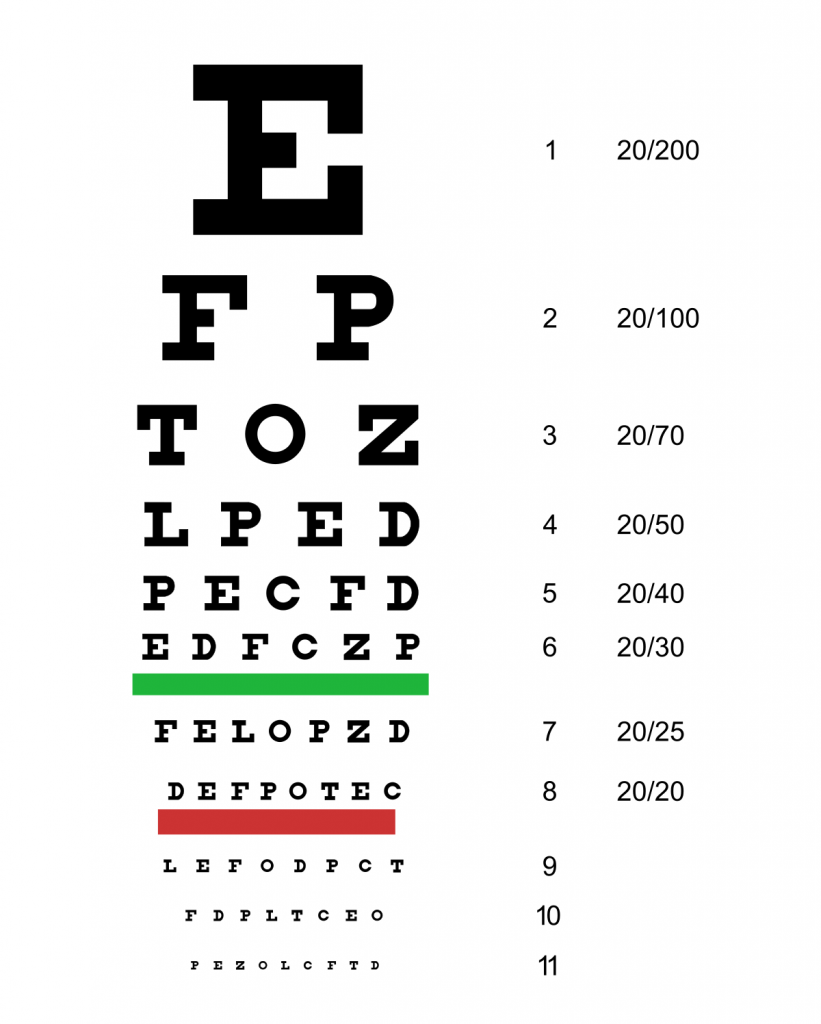
I didn’t experience any dramatic vision changes when I turned 40. During my early 40’s, I found myself holding the fly a little farther away to tie it on and tangles were just a little more frustrating in lower light. But when 45 rolled around, my arms were no longer long enough and that sunshine just never seemed bright enough to help! I needed a solution and for the last few years, I’ve been searching for the perfect vision “system.”
I’ve worn eyeglasses or contacts for distance my entire adult life. When I don’t have contacts in or glasses on, my close up vision is perfect. So for a year, I quit wearing contacts. I wore my eyeglasses when I fished and when I needed to see up close, I’d just look over the top of my glasses. It was perfect for managing my vision challenges, but created a problem with one of my most important pieces of fishing gear… polarized sunglasses.
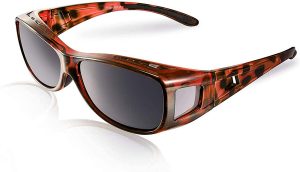
I didn’t want to get prescription sunglasses because they were heavy and I couldn’t get prescription lenses in the wrap style that I preferred. Additionally, they made it difficult to see in low light conditions. So, I went with the “fit over” style sunglasses to wear over my eyeglasses. They worked great, but I found that wearing those for 8 hours a day, every day, just wasn’t very comfortable. That’s a lot of weight on your nose, particularly on a hot day when you’re sweating a little more.
I’m sure many of you in the 40+ club have similar struggles. You want the eye protection and visual benefits of polarized sunglasses but you also need to be able to see in low light. You need to be able to see detail in small things, such as threading the eye of a hook. And you likely don’t want to have three or four pairs of glasses hanging around your neck!
I ultimately went back to contact lenses and I found a pair of polarized glasses that have small magnifiers in the bottom of the lenses – kind of like a bifocal. They present a little problem when wading because of the distortion when you look down, but I’ve mostly trained myself to use more head than eyes when looking down. For lowlight situations, I keep a pair of readers handy. I use the ThinOptics brand/style because they take up so little space.
This little system has been working pretty well for me the last couple of years but you may have slightly different challenges. In my “vision quest,” I found a few different solutions and have included some of them below.
Polarized Sunglasses with Magnifiers
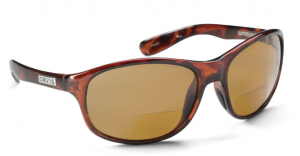
I’m sure there are others out there but if so, I didn’t see them. The only ones I could find were from Orvis. They’re good glasses and I’ve worn them for a few years now with no issues. Apparently there are also stick-on magnifiers you can add to any glasses but I haven’t tried them.
Readers
There are a number of readers you can get from high dollar to just a few bucks and they can be purchased through specialty stores or at your local grocery or Walmart. My issue with most readers is they either need to be stored in a pocket where they aren’t readily accessible or they hang around your neck. Since my preferred “pack,” the Richardson Chest Fly Box, hangs on my chest and I already have polarized sunglasses on a Croakie, I didn’t want one more thing hanging around my neck.

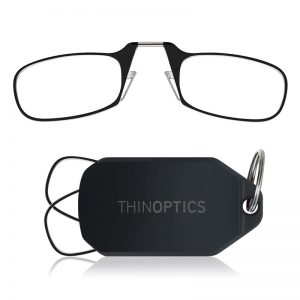
I solved the problem with ThinOptics readers. They are super thin and they “fold” into a super thin case. The original was designed to stick on the back of your cellphone. I stick mine on the front of my chest fly box. But there are numerous other clever designs now, including one intended to be a key chain, that conveniently attaches to a zipper or D-ring on a vest or pack.
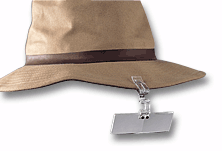
Another reader/magnifier popular among fly fishers is the Flip Focal. This is a simple device that clips to the bill of your hat and folds up out of the way. When you need to tie a knot or perform a similar task, you can flip down the magnifier. I personally don’t like looking upward to do those things so this didn’t suit me. I also wear different hats and don’t like having to remember to change my Flip Focal to a different hat every day.
Threaders and Knot Tools
Many folks, instead of attempting to improve their vision to perform tasks like threading hooks and tying knots, prefer to utilize various tools and gadgets.
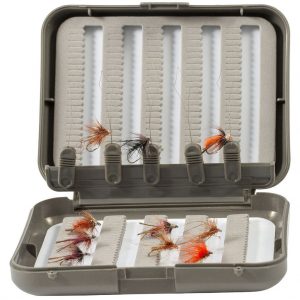
One popular item is the threader fly box. You can preload flies onto the threaders in the box. Run your tippet through the head of the threader and pull the desired fly off onto the tippet.
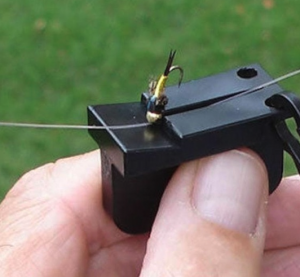
Or you may prefer to carry a separate threader attached to your pack or vest. This magnetic threader is pretty slick. You simply put the eye of the hook on the magnet which automatically lines it up with the precut channel on the tool. Run your tippet through the channel and it threads perfectly through the eye of the hook. Watch this video to see exactly how it works.
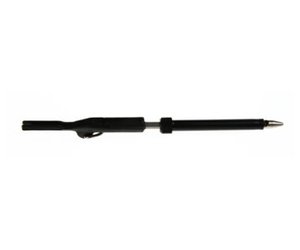
You may prefer to take it one step further and have a tool that will also assist in tying the knot. There are a bunch of different variations but this three-in-one tool will act as a threader and help tie a few different knots. Here’s a good video to show you how it works.
Hopefully one or more of these items will make your time on the water a little easier. If you have another method not mentioned here that works well for you, please share!

